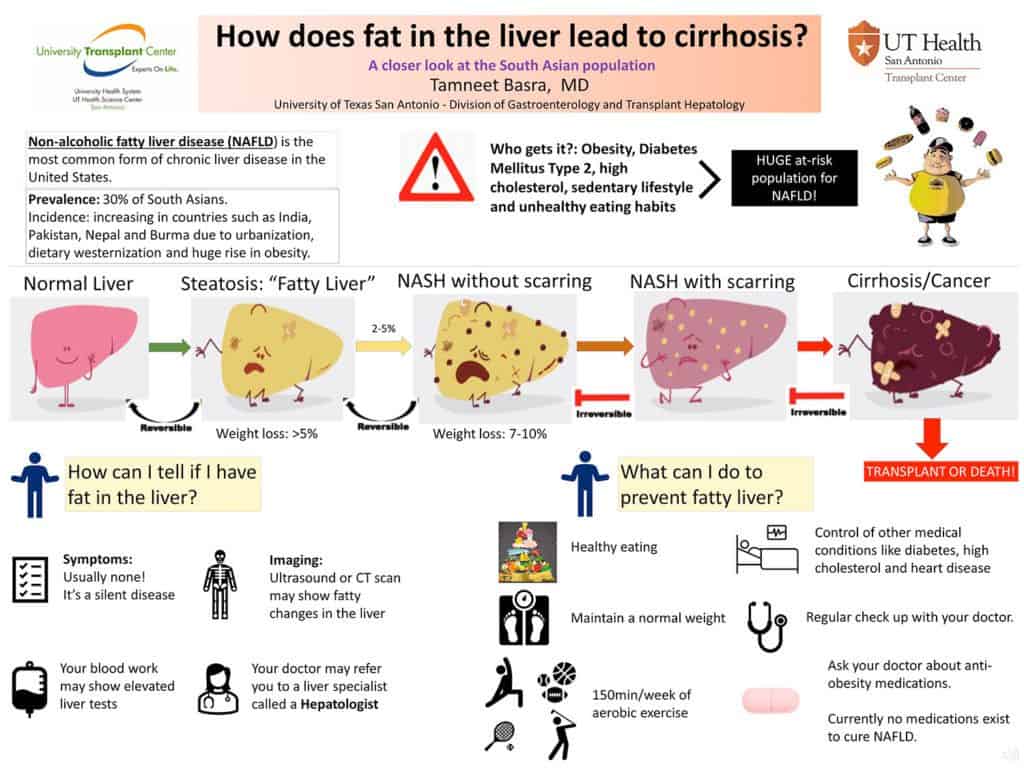How Does Fat in the Liver Lead to Cirrhosis? A Closer Look at the South Asian Population
Tamneet Basra, MD
University of Texas San Antonio – Division of Gastroenterology and Transplant Hepatology
This presentation is an excerpt from the ALF 2021 Poster Competition. This competition showcases posters and a brief video created by early career investigators from across the country on six areas of educational focus: fatty liver disease, liver cancer, liver transplantation, pediatric liver disease, rare liver disease and viral hepatitis. Participants are tasked with translating complicated medical information into a poster which can be easily understood by patients or the public. Posters are reviewed by a formal panel of judges comprised of Medical Advisory Council members, Board Members and friends of ALF to select a winner in each category.

NAFLD (Nonalcoholic fatty liver disease) is liver disease that is not caused by alcohol intake. It is the most common form of chronic liver disease in the United States and in minorities such as South Asians, it can be seen in about 30% of the population worldwide. The incidence has been increasing in countries such as India, Pakistan, Nepal, and Burma due to urbanization and widespread available of fast food and influx of the western diet leading to unhealthy eating habits. It has also been noted to correlate to the rise in obesity in these countries as well.
NAFLD is seen in patients that have obesity, have metabolic syndrome comorbidities such as diabetes mellitus type 2, hyperlipidemia, or heart disease. It is also seen in patients who live a sedentary lifestyle with limited physical activity and those that follow unhealthy eating habits. These patients are part of the population that are very high risk for developing NAFLD at some point in their life.
Steatosis is fat deposition in the liver. It can progress to NASH with increasing inflammation and minimal fibrosis in 2-5% of patients. If lifestyle interventions such as weight loss, healthy eating and exercise is not implemented, fibrosis persists, and the liver disease becomes irreversible. Eventually this forward progression leads to end stage liver disease, or cirrhosis. These patients have an increased risk of hepatocellular cancer and can ultimately succumb to death unless liver transplantation is an option.
Predicting who has fatty liver disease can be difficult as most patients do not develop symptoms until much later in their disease course. Labs may show elevated liver enzymes and imaging may suggest fatty deposition. Patients should be counseled on maintaining a healthy lifestyle with regular aerobic exercise, nutrient dense diet, maintaining a normal weight and managing other medical comorbidities to prevent further decompensation of liver disease.
Last updated on December 1st, 2022 at 01:55 pm